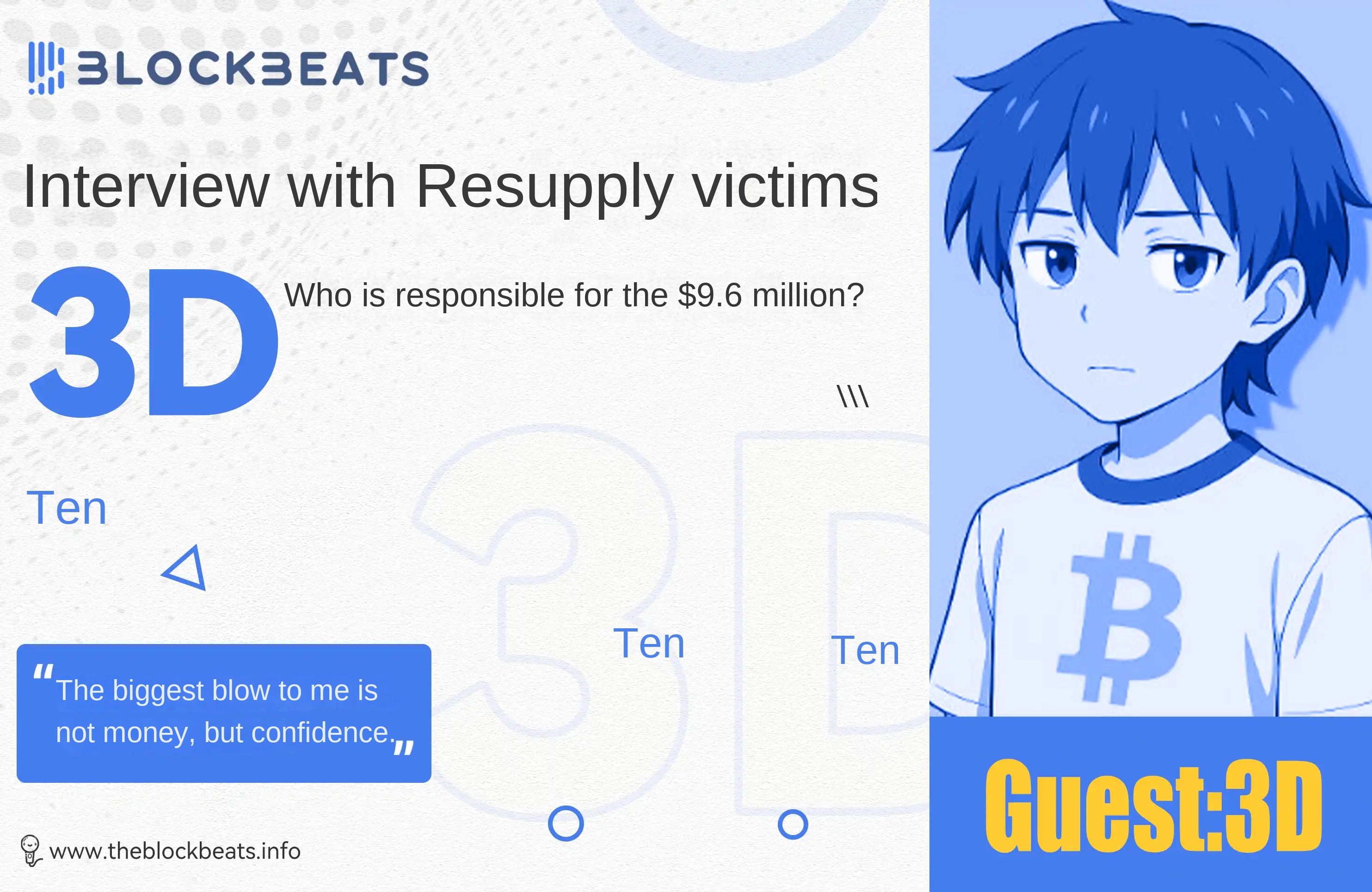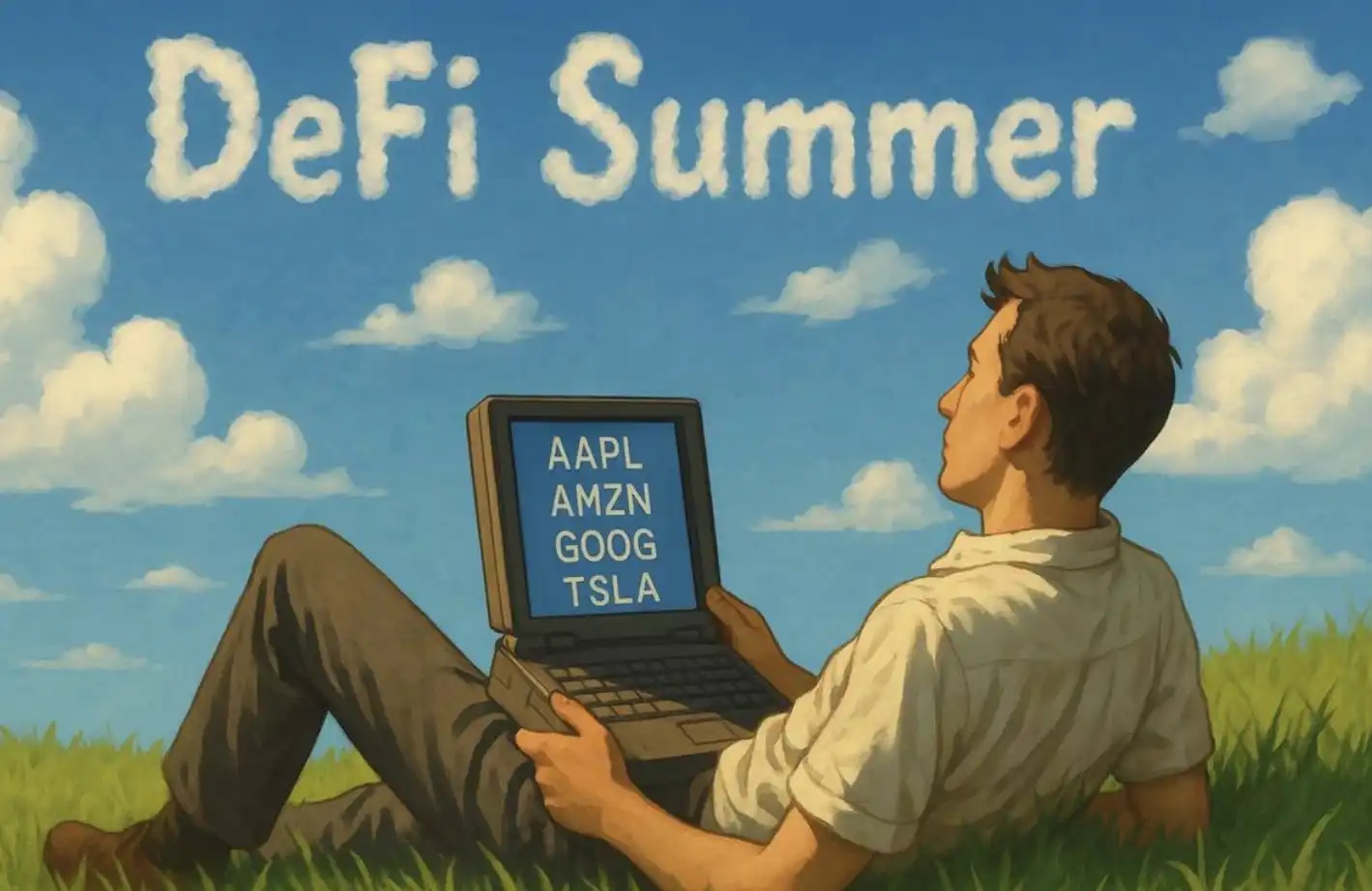From Robinhood to xStocks, how is the tokenization of US stocks being achieved?
After Trump's return to power, the U.S. regulatory environment underwent a significant change, and security tokenization enjoyed a policy dividend window. Platforms such as Robinhood, Bybit, and Kraken have joined the game, setting off a wave of "Tokenized Stocks" and attempting to reconstruct the global asset trading logic in an on-chain manner. Behind this revolution of capital and crypto integration lies not only the ambition to disrupt the traditional brokerage model but also a deep consideration of compliance maneuvering and product roadmap.
Three Mainstream Models of U.S. Stock Tokenization
Current attempts at U.S. stock tokenization in the market can be roughly divided into three paths: the "Third-Party Compliance Issuance + Multi-Platform Access Model" represented by Backed Finance; the "Licensed Broker Self-operated Closed-loop Model" represented by Robinhood; and the "Contract for Difference (CFD) Model" adopted by platforms such as Bybit. These three paths not only differ in their technical architecture but also represent different understandings of compliance responsibilities, user relationships, and market structure.
Third-Party Compliance Issuance + Multi-Platform Access Model
The core of this model is the "separation of compliance issuance and platform access," with the recent alliance of xStocks, Kraken, and Bybit being the main example. The specific operational path is that institutions like Backed Finance, holding regulatory licenses in Switzerland or the EU, purchase stocks in the U.S. stock market through the IBKR Prime channel and custody them under regulated custodians such as Clearstream, Interactive Brokers, etc.

Once the stocks are actually purchased and settled, corresponding stock tokens (such as TSLAx, AAPLx, NVDAx) are minted 1:1 on public blockchains like Solana (which will also expand to Ethereum ERC20 in the future), and liquidity support within the trading platform and on-chain, as well as secondary trading matching services, are provided by exchanges like Kraken, Bybit, Jupiter, etc.
The key feature of this model is that the "issuer is the primary responsible party," with all compliance requirements, asset transparency disclosures, and off-chain custody being borne by institutions like Backed; the trading platform only serves as the front-end access and does not need to bear the compliance pressure of security token issuance, thereby achieving compliant circulation in non-U.S. markets on a large scale.
The advantage of this path lies in the clear asset ownership logic, where all tokens correspond 100% to actual holdings, managed by custodians in segregated accounts. It has openness and liquidity, supports on-chain trading, 24/7 trading, seamless integration with DeFi applications, and can seamlessly connect with the later extended "Stock Token" DeFi protocols. Moreover, the compliance path is clear, requiring only the issuing side to have a regulatory license, while the platform side theoretically acts as a "distributor" that can infinitely expand its business, rapidly expanding into "non-U.S." markets.
In fact, back in 2020, FTX had already attempted to tokenize stocks using this approach. At that time, FTX allowed users to trade tokens of well-known US stocks such as Tesla (TSLA) and Apple (AAPL) on its platform. These tokens were issued by its Swiss subsidiary Canco GmbH and were pegged to real stocks held by third-party brokers, creating a "1:1 pegged" mapping relationship.
At that time, users could participate in popular US stock investments around the clock with as little as about 1 US dollar. To further enhance "compliance," FTX partnered with the German financial services firm CM-Equity AG and Digital Assets AG to jointly establish a compliance framework, giving these stock tokens legitimacy and financial interoperability. However, this business was suspended along with FTX's announcement of bankruptcy due to severe issues such as embezzlement and fraud in November 2022, halting its tokenized stock business.
This approach also had clear limitations. Although the SEC is not as "strict" as during the FTX era, because the SEC has not yet recognized the compliance of such products, products based on this approach are limited to US users. Additionally, because the approach is relatively easy to replicate, if major exchanges cannot reach a consensus, there will be multiple "tokenized" stocks of the same company, leading to relatively fragmented liquidity.
Most importantly, trust in the issuer is still required. Despite the independent custody system, there is a "hollow period" in terms of data disclosure and asset redemption by the issuer (data falsification or redemption delays). Taking the example of the issuer behind xStocks, Backed, some skepticism has arisen in the community. KOL CryptoBraveHQ expressed concerns about the backgrounds of Backed's team members on X. Backed's three main co-founders, Adam Levi, Yehonatan Goldman, and Roberto Klein, were respectively the co-founder and former CTO, COO of the "failed" project DAOstack, and the legal and regulatory affairs lead. CryptoBraveHQ further stated, "After raising approximately $30 million in the $GEN ICO, the team couldn't even bother with a small office and just disappeared after issuing the coins."
Licensed Broker Self-Issuance + Closed-Loop On-Chain Trading
The project with the most well-defined roadmap for this approach is currently Robinhood, which follows a more thorough "Broker-Driven On-Chain Model." Compared to the xStocks model, it does not rely on third-party compliance issuers but rather uses a traditional brokerage license as the foundation, enabling seamless integration of stock purchasing, token minting, user trading, and settlement along the entire chain.

Specifically, Robinhood's European subsidiary holds a Lithuanian securities license, allowing it to legally purchase and custody U.S. stocks, ETFs, private equity, and other assets. Subsequently, it mints tokens on Arbitrum (such as TSLA-t, APL-t), and facilitates closed-loop trading within its app. Each token transaction updates the on-chain state in real-time, with the backend inventory dynamically reflecting the actual shareholding status, ensuring that "on-chain total supply = Regulatory custody holdings." Robinhood plans to later migrate this system to its proprietary Robinhood Chain to achieve full on-chain autonomy and cross-chain transfer capabilities.
Replicating this model is challenging as Robinhood itself, as a regulated entity, possesses end-to-end capabilities such as securities issuance, clearing, dividend execution, among others. Thus, whether it's off-chain stock purchases, on-chain minting, or trade settlement and fund flows, the entire process can be fully controlled in a closed-loop manner without relying on third-party custody or matching services. Moreover, the business scope is broader. Although only the tokenization of "OpenAI and SpaceX" stocks has been announced so far, Robinhood has the institutional foundation and technical system to tokenize real assets ranging from stocks to private equity, bonds, and RWAs.
Contract For Difference (CFD) Model
The Contract For Difference path does not involve the underlying stock assets but uses stock prices as the index source, enabling price speculation through platform-specific contracts. For example, the perpetual contract for TSLAUSDT offered by Bybit does not hold any Tesla stocks; it is based solely on oracle price feeds and market-making logic, providing users with high leverage and bidirectional trading contract products.

The advantages of CFD are also evident: easy deployment, quick rollout, and no need to hold actual stocks or establish custody links to list any U.S. stock-related assets. Following the launch of Bybit TradFi, users on the Bybit App can trade a wide range of traditional financial assets, including oil, gold, stock CFDs, and forex—over 100 assets in total—supporting high-frequency trading, leverage, and other modes. Since it does not involve actual securities issuance, the platform operates under derivative regulatory standards.
However, the problem with this approach is quite evident. CFDs are not a true path to "tokenized securities" in the sense of actual ownership. Instead, it is more like a speculative response from the crypto platforms to the demand for U.S. stocks. Users do not truly hold these assets, and the centralization risk is significant. In fact, the risk to the asset structure is even greater than that of on-chain Memecoins.

The Two Sides of One Path: Who Will Win Between Robinhood and Coinbase?
As the trend of tokenizing U.S. stocks heats up, two "San Francisco-born" fintech companies, Coinbase and Robinhood, have embarked on two distinctly different paths. One is starting from on-chain infrastructure, attempting to penetrate U.S. regulatory barriers with technology and legal means. The other, originating from a brokerage, was the first to establish a closed-loop scenario in Europe and is gradually building a global tokenization trading network.
How Did Robinhood Take the Lead in the "On-Chain Brokerage" Model?
In a world where global exchanges are eagerly exploring tokenized stocks, Robinhood is no longer satisfied with the label of "commission-free revolutionizer" but is seeking to reshape the entire traditional asset trading infrastructure. From launching stock tokenization in Europe to building Robinhood Chain for global developers, this U.S. brokerage giant is driving a more profound transformation at an unprecedented pace, enabling stocks, private equity, and even financial derivatives to fully enter the on-chain world.
Robinhood's on-chain strategy is far more than simply mapping real stocks to tokens; it involves a deep restructuring around regulatory licensing, on-chain settlement, and multi-market collaboration. This fundamental difference sets it apart from other crypto platforms that only provide token trading. Robinhood is the only player that has bridged the gap between "brokerage + Layer2 + real stock custody," forming the prototype of an on-chain brokerage.
Starting in Europe to Create the First Compliant Test Field for Tokenized Assets
In early June 2025, Robinhood completed a $200 million cash acquisition of the Luxembourg-based cryptocurrency exchange Bitstamp, adding over 50 licenses and registrations to its cryptocurrency division, along with a mature institutional exchange with over 5,000 institutional clients. Additionally, in May, Robinhood announced a $179 million acquisition of the Canadian cryptocurrency platform WonderFi to strengthen its presence in the Canadian market. With these moves, Robinhood has secured a crucial piece of its "U.S. stock tokenization" plan.
At the end of June, Robinhood announced the launch of an Arbitrum-based tokenized stock trading platform in 31 European countries, with the initial listing of over 200 US stocks and ETFs. The platform plans to expand to equity tokens of unlisted companies such as SpaceX and OpenAI. These tokens are fully held and minted by Robinhood itself, ensuring a 1:1 correspondence with real stocks, and they also support real-time dividends and stock splits.
Unlike previous attempts by centralized platforms, Robinhood did not rely on third-party issuance institutions. Instead, it leveraged its Lithuanian MiFID securities license through its European subsidiary to purchase real stocks within a compliant framework, hold them in custody accounts, and establish its proprietary custody-mint-trade closed-loop process. Robinhood not only upgraded its token trading interface but also simultaneously transformed the original Robinhood Crypto App into a comprehensive investment platform. This new platform integrates perpetual contract trading, cryptocurrency management, on-chain staking, and an AI investment assistant into a single app to provide users with a complete investment toolkit.
Sound Familiar? Phase One Token Launch, Phase Two Liquidity Mining, Phase Three DeFi
However, the European operation is just Robinhood's first step. The launch of Robinhood Chain signifies a comprehensive declaration of the future form of the asset internet. This Layer2 network, built in collaboration with Offchain Labs based on Arbitrum, not only supports the transaction settlement of all tokenized assets of Robinhood but will also be open to global third-party developers to create an on-chain ecosystem around the issuance of real assets.
The underlying design logic is divided into three stages: the first stage involves Robinhood's brokerage purchasing real stocks and custodying them to mint on-chain tokens; the second stage introduces Bitstamp as an additional source of liquidity to ensure continuous token trading during weekends and other traditional market closures; the final stage allows users to self-custody the tokens issued by Robinhood and migrate them to other chains or DeFi protocols for use.
Throughout the entire process, Robinhood holds the purchasing right, custody right, minting right, trading gateway, and user relationships, achieving an on-chain closed loop where "token ≈ stock." The on-chain layer is purely for accounting, with all actions synchronized off-chain. This model sacrifices token transferability but significantly enhances regulatory control. It also paves the way for its future expansion to Robinhood Chain, a global chain compatible with both traditional finance and blockchain assets.
Robinhood's logic is that since it is a brokerage, it will buy stocks itself, hold them in custody, and mint them itself. Throughout the process, Robinhood holds the rights to buy, custody, mint, trade entry, and user relationships, thereby achieving an on-chain closed loop where "token ≈ stock." The on-chain aspect is just the accounting layer, with all actions synchronized off-chain. This model sacrifices the transferability of tokens but greatly enhances regulatory controllability. It also paves the way for its future expansion to Robinhood Chain, a global public chain compatible with both traditional finance and blockchain assets.
This means that Robinhood is no longer just an end-terminal trading platform but is transforming into an "on-chain brokerage base" integrating asset issuance, clearing, and trading into one. Of particular note is Robinhood's layout in private equity. Its tokenization issuance not only breaks the high threshold structure of traditional private investment but also could change the liquidity logic of early-stage tech equity, forming a new species resembling a "crypto primary market," something Solana has been advocating for as "ICM." This new model may now be realized in this traditional brokerage context.
Coinbase: Building from the Chain, Seeking Reverse "Exchange + Compliance Issuance" Synergy
Although it has not yet launched its stock trading business, Coinbase, which recently held equity in Circle, went public, and brought its perpetual contract business back to the U.S., is a force to be reckoned with here. In fact, Coinbase's logic follows a different path: first, build the infrastructure, then lobby for regulation, seek licenses, exemptions, or precedent permits, and then tokenize assets.

According to a Reuters report, on June 17, Coinbase's Chief Legal Officer Paul Grewal stated that leveraging its in-house Base public chain and Layer2 technology stack, along with a dormant broker-dealer (a securities brokerage business entity not yet activated), Coinbase has applied to the SEC for a no-action letter, seeking legal exemption for tokenized stock products.
Coinbase's plan is that once it receives SEC clearance, it can on-chain issue tokens representing equity and work with on-chain smart contracts to complete processes such as T+0 settlement, fractional share splitting, real-time dividends, and more. Its native underlying stablecoin assets, native Layer2 Base, and its already top-tier institutional exchange will bring even greater advantages to the "sales end."
Compared to Robinhood's approach of "move fast and break things," Coinbase has chosen the path of "compliance first." This not only reflects its sensitivity as a publicly listed U.S. company but also represents a higher-risk strategy that, once successful, could allow it to "capture the largest slice of the U.S. market."
Tech vs License, Open Source vs Walled Garden: Who Can Win the Last Mile?
At a foundational level, Robinhood is a "license-driven" on-chain broker, while Coinbase is an "infrastructure-driven" on-chain platform. The former follows a closed-loop control path, while the latter seeks open collaboration.
Currently, Robinhood holds the full chain issuance qualification for securities and has a stronger capability to handle fractional shares and real equity integration. On the other hand, although Coinbase has not yet achieved practical issuance, the maturity of its Base public chain technology and the depth of exchange-side matching give it the potential to establish a "global on-chain securities standard network."
This showdown ultimately boils down to a multi-party coordination game of "who can simultaneously convince users, regulators, and the market." If Robinhood can establish on-chain liquidity and multi-platform interoperability, and if Coinbase can get the green light from the SEC, it may directly become the gateway for tokenized equity in the U.S. One starting from the traditional industry and the other from the cryptocurrency world, the battle for the future of on-chain securities has just begun.
Although tokenized stocks have made significant progress in technology, compliance, and user experience, their scalability still faces several challenges, such as fragmented liquidity, high hedging difficulty, complex on-chain dividend and governance, and inconsistent geopolitical regulations. However, as giants like Robinhood and Coinbase with compliance qualifications enter the field, tokenized stocks will transition from a "gray experiment" to a "legal gateway," signaling that the next stage of asset transformation may be on the horizon.
Welcome to join the official BlockBeats community:
Telegram Subscription Group: https://t.me/theblockbeats
Telegram Discussion Group: https://t.me/BlockBeats_App
Official Twitter Account: https://twitter.com/BlockBeatsAsia
 Forum
Forum OPRR
OPRR Finance
Finance
 Specials
Specials
 On-chain Eco
On-chain Eco
 Entry
Entry
 Podcasts
Podcasts
 Activities
Activities









